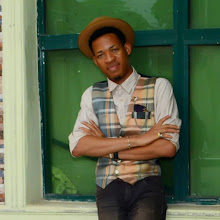How Many Assets Do You Have in Your Network?
Last week, I had a Strategy Session with an accomplished author, consultant and speaker in Europe.
His goal over the coming year is to increase the amount of paid speaking engagements he gets because being on stage naturally leads him to more consulting gigs as well.
First, we looked at what he is currently doing.
Almost every time he is getting booked for speaking, it’s because the event organizer found him by doing research or through a referral.
So every time he gets booked, it’s because the decision maker needs him right now. That’s good of course.
However, the challenge is that there is no control he has over that. The decision maker does the research, comes up with several people to call and then compares his choices.
So we started working on a different approach
We looked at his existing network.
When I asked him how many event organizers and creators he has in his network, he said that he had neglected connecting with them in the past. He had mainly focused on connecting with peers. So we started there.
Now, as you know, a referral is one of the most powerful ways to win new business.
So we mapped out a referral trust building sequence.
Because he had no systematic approach in the past, he neglected keeping up the relationships with his peers and did not nurture them.
So we started with brainstorming what a re-connection sequence could look like.
A re-connection sequence is designed to re-establish a relationship or re-initiate it. This can be done with anyone from a good friend you haven't’ talked to in a long time, to a LinkedIn connection you never really talked to.
The speaker told me that he had recently developed some simple tools to make his life as a speaker a lot easier. So he could share these tools with his peers because that would add tremendous value to their lives.
Great. Now we even had some content to start with.
At the end of our conversation, we got to a place where we had a very clear idea about what kinds of trust building stages his peers need to go through in order to remember him as the very first person when somebody asks about great speakers on his topic.
We even mapped out some of the content he could share with his peers to make that happen.
As the next step in our relationship, we need to identify the right people in his network, categorize them and then design the actual messages in the trust building sequence that will evolve his peers from one stage to the next. This will ensure that the network he has already built, is actually working for him and he’s not just wasting this asset.
Now I want you to think about your network
Where are your relationship assets? And how do you currently nurture these relationships to create win-win situations?
Chances are that you already have lots of relationship assets.
The question is, how do you leverage those assets in a way that feels authentic to you?
Maybe the reason you haven’t nurtured these relationships enough is because you’re afraid you come over as pushy.
Or maybe it’s because there are simply too many small decisions to make and too little time in the day.
Here’s my suggestion.
Think about nurturing these relationships in a systematic way that feels completely authentic to you and people in your network.
Because when you combine the systematic side and the authentic side, you’ve got the key to making it effortless and effective.
If you want to chat more about this, I’m happy to connect on LinkedIn and start a conversation.











Leave a Comment